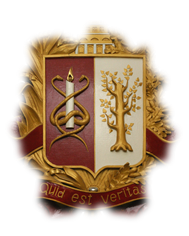Issue: 2018, Vol. 23, No. 2
CARDIAC RHYTHM DISORDERS IN ISCHEMIC INSULT BY HOLTER MONITORING RESULTS
- Keywords
- ischemic insult, cardiac rhythm disorders, Holter monitoring
- Abstarct
- Actuality - Both close interaction of cardiac and cerebral diseases pathogenesis and active introduction of interventional techniques for their treatment stipulated active research of cardiac aspects of ischemic insult, influence of cardiac pathology on post insult period, impact of insult which took place on cardiac vascular system work. Objective - to study the frequency of arrhythmia development and features in patients in acute period of ischemic insult, to reveal the regularities of arrhythmia development in dependence on ischemic insult focus volume, to compare the results of these patients’ examination in six months after acute disorder of cerebral circulation. Material and methods. 112 patients (71 men and 41 women) were examined. 90 patients with acute ischemic insult were enrolled in basic group, among them macrofocal lesion with large volume of cerebral infarction focus and severe neurological deficiency was registered in 47% cases. 22 persons without heart and brain organic pathology composed control group. Clinical examination with estimation of neurological status, electrocardiogram Holter monitoring, computer and/or magneto-resonance brain tomography was performed. 48 patients with ischemic insult were repeatedly examined in six months after ischemic insult development. Results and discussion. Ventricular disorders of cardiac rhythm were more often revealed in patients from basic group but trustworthy distinctions in comparison with control group were obtained only by incidence of ventricular extrasystole IY class (by B. Lown - M. Wolf); in control group - 2 (9%), in basic group - 18 (20%) (p < 0,05). In macrofocal ischemic insult average quantity of ventricular extrasystole was practically 10 times more in comparison with subgroup with microfocal disorder (701 [2; 842] and 63 [ 0; 81] respectively; p < 0,05); ventricular extrasystole IY class was trustworthy often registered (23% and 16% respectively, p < 0,05). The portion of patients with supraventricular tachycardia paroxysms was similar in these subgroups (60%, but paroxysms average number in the subgroup with macrofocal ischemic insult were more than in patients with microfocal ischemic insult. Conclusion. It was expediently to perform electrocardiogram Holter monitoring in order to reveal arrhythmia in patients in acute stage of ischemic insult; it would allow to correct treatment tactics for cardiac activity improvement and arrhythmia events prevention.


 20-24_Мелкумова
20-24_Мелкумова